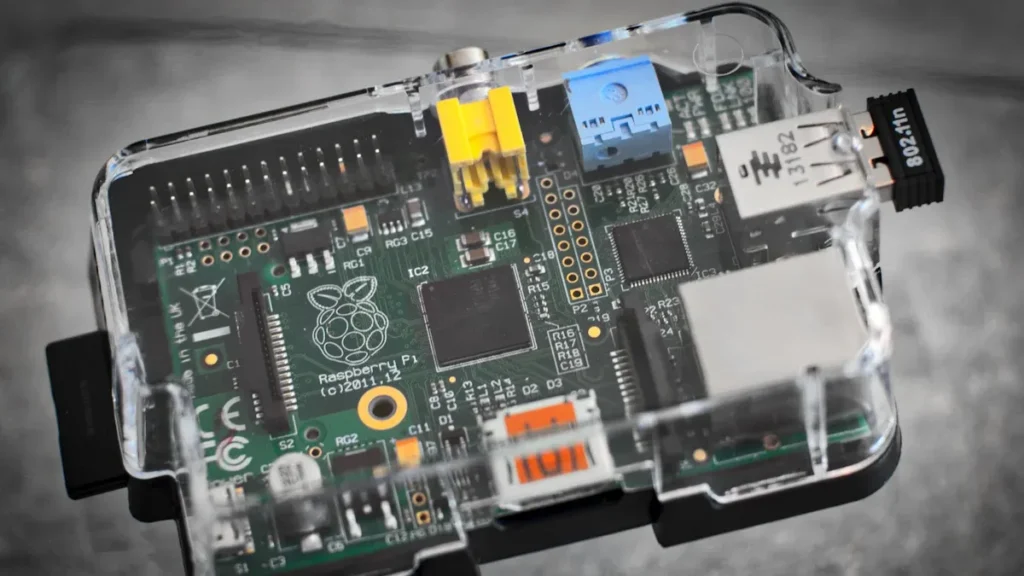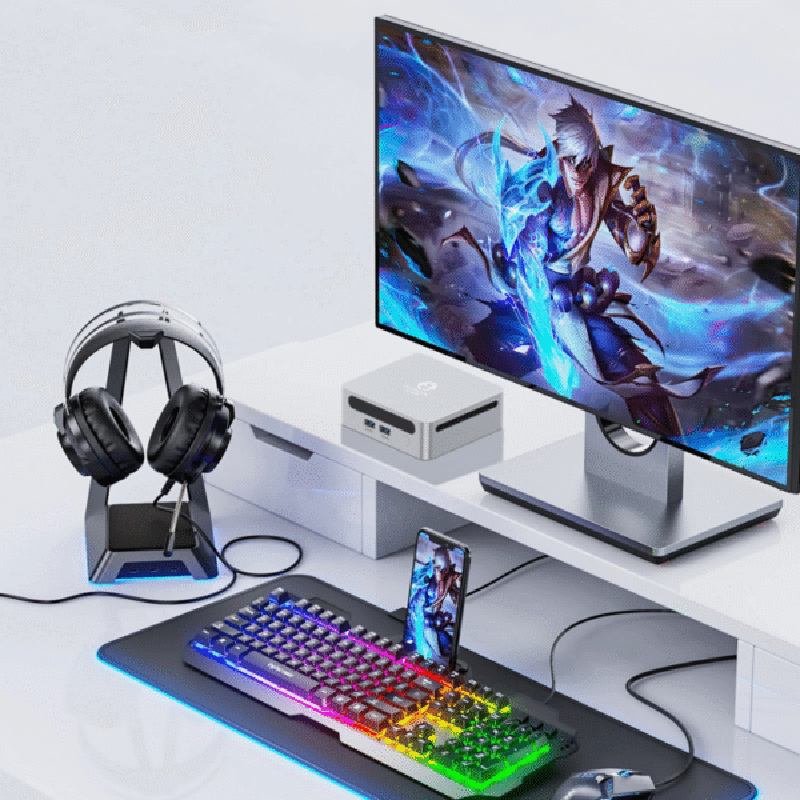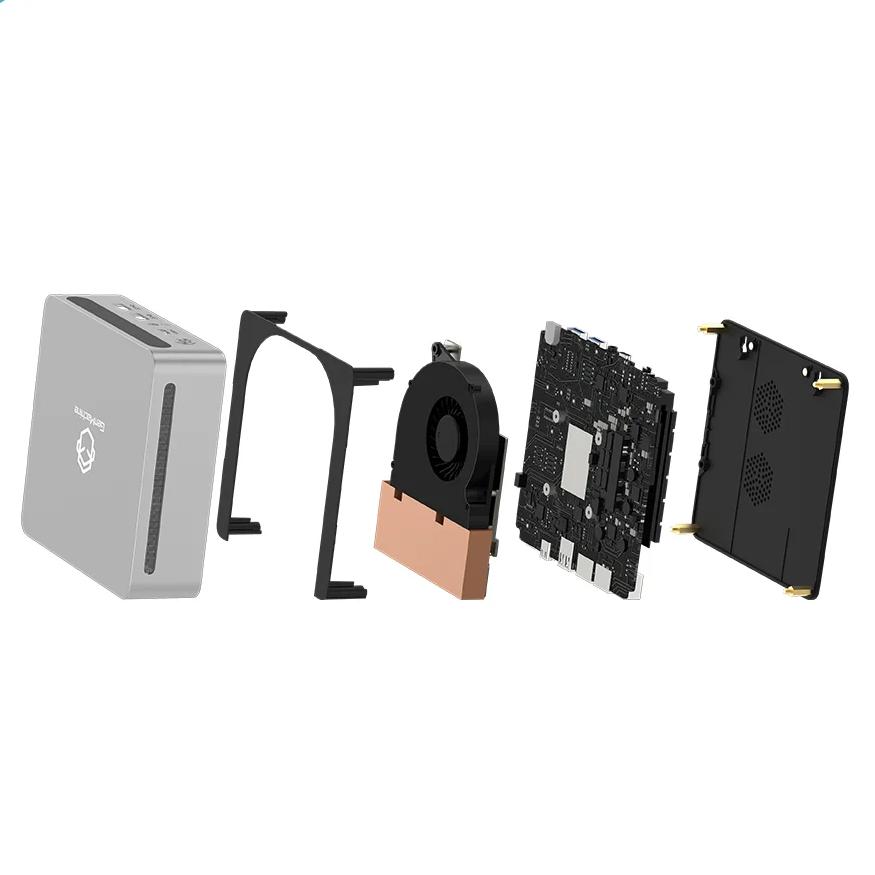The days of needing a giant, glowing tower to play PC games are, for many people, coming to an end. We’re living in an era of efficiency. Laptops are thinner, phones are more powerful, and our living spaces… well, they aren’t getting any bigger. This squeeze—for more desk space in a dorm, a cleaner look in the living room, or a setup you can throw in a backpack—has pushed gamers toward smaller and smaller Compact gaming PCs.
For a long time, “compact gaming” meant a cube-like ITX build. But now, an even smaller category is taking the lead for the most compact Gaming PC experience: the Mini PC. These tiny boxes are no longer just for spreadsheets and streaming. They’ve become genuinely capable, surprisingly potent compact gaming PCs.
What Defines a Compact Gaming PC?
The term “compact” can be a bit vague. A “small form factor” (SFF) enthusiast might consider a 15-liter case to be tiny. But when we talk about the most compact options, we’re in a completely different league.

Core Size and Volume Requirements
We’re looking at machines in the 1-liter to 3-liter range, and sometimes even smaller. Think about that. A 1-liter chassis is about the size of a large paperback book. This ultra-small size dictates everything else. Port layout is tight, upgradeability is limited, and there’s certainly no space for a standard graphics card.
Challenges of Compact Hardware
Packing performance into a box this small creates a trifecta of engineering challenges:
- Heat Management: This is the mortal enemy. High-performance components get hot. In a tiny, enclosed space, heat builds up instantly, threatening to throttle performance.
- Power Delivery: You can’t fit a standard 750W power supply. These devices rely on external power bricks (like a laptop) or highly specialized, tiny internal power supplies.
- Noise Control: The only way to move a lot of heat with a small fan is to spin it very, very fast. This can create a high-pitched whine, which is arguably more annoying than the low hum of a large tower fan.

Why Mini PCs Qualify as the Most Compact Option
Mini PCs are designed from the ground up to tackle these issues. They use highly integrated, laptop-style motherboards where the processor is soldered directly to the board. But the real key, the component that unlocks their gaming potential, is the modern APU (Accelerated Processing Unit). These chips combine powerful CPU cores and surprisingly capable integrated graphics (iGPU) on a single, low-voltage die, making a compact gaming PC chassis feasible.
Why Mini PCs Are the Most Compact Gaming PCs
Structural Advantages of Mini PCs
When you eliminate the need for a full-size, hot-swappable discrete GPU, the entire design shrinks. There are no bulky PCIe slots, no massive tower coolers, and no ATX power supply. Instead, a mini PC uses a custom thermal module—often a combination of heat pipes, a vapor chamber, and small blower fans—that is specifically designed to cool its one major component (the APU). This results in a footprint that is often 1/10th the size of even a “small” ITX gaming PC.
Performance Improvements in Integrated Graphics
This is the secret sauce. For years, “integrated graphics” was a joke in gaming circles. Not anymore. The evolution of iGPUs, particularly AMD’s Radeon series, has been a game-changer.
The Radeon 780M (found in many Ryzen 7 series chips, such as 7840HS mini PC) and the newer 890M are frankly impressive. These iGPUs share the system’s high-speed DDR5 RAM and can punch well above their weight. This isn’t about running Cyberpunk 2077 at 4K Ultra. It’s about being able to run it at 1080p low/medium settings with playable frame rates, something that was unthinkable for an iGPU just a few years ago.
Expanded Usage Scenarios
This blend of small size and decent power unlocks new ways to play:
The Dorm/Desk Setup: It frees up invaluable desk space, leaving room for monitors and notebooks.
The Living Room Console: It’s small, quiet, and discreet, fitting perfectly into a TV stand for couch co-op games.
The Portable Rig: Paired with a portable monitor, a Mini PC becomes a travel-friendly setup for LAN parties, hotel rooms, or hybrid work.
Gaming Performance Expectations for Compact Mini PCs
So, what can you actually play on one of these? Let’s manage expectations. A top-tier Mini PC with a Radeon 780M is a 1080p machine.

Expected FPS in Popular Titles
Performance is directly tied to the game’s optimization and intensity. Here’s a general idea of what to expect at 1080p resolution:
| Game Category | Example Titles | Expected Performance |
| Esports | Valorant, CS2, League of Legends | High settings, often 100+ FPS. Very smooth. |
| Optimized AAA | GTV 5, The Witche 3 | Medium settings, typically 60-90 FPS. |
| Demanding AAA | Baldur’s Gate 3, Cyberpunk 2077 | Low settings (with FSR), targeting 30-45 FPS. |
Thermal and Stability Considerations
The catch is sustained performance. A mini PC might give you 40 FPS in Baldur’s Gate 3 for the first 10 minutes, but as heat soaks into the tiny chassis, the APU may thermal throttle (slow itself down) to survive. The best compact gaming PCs are the ones with robust cooling that can maintain their target performance for hours.
Noise and Power Efficiency
The good news? They are quiet… at idle. When you launch a game, those small fans will spin up. They are generally quieter than a full-size desktop under load, but the character of the noise is different (more “whoosh” or “whine” than “hum”). On the plus side, they are incredibly power-efficient. A full system might pull only 80-100 watts from the wall during a heavy gaming session, compared to 300-500W for a traditional rig.
Conclusion
So, what is the most compact gaming PC? It’s not a tower. It’s not even a small form factor ITX build.
The answer is the Mini PC. It represents a compromise, for sure—you’re trading raw power and upgradeability for an incredibly small footprint and high efficiency. But thanks to powerful new APUs, that compromise is smaller than ever. You can now get a genuinely good 1080p gaming experience from a machine you can hold in the palm of your hand.





